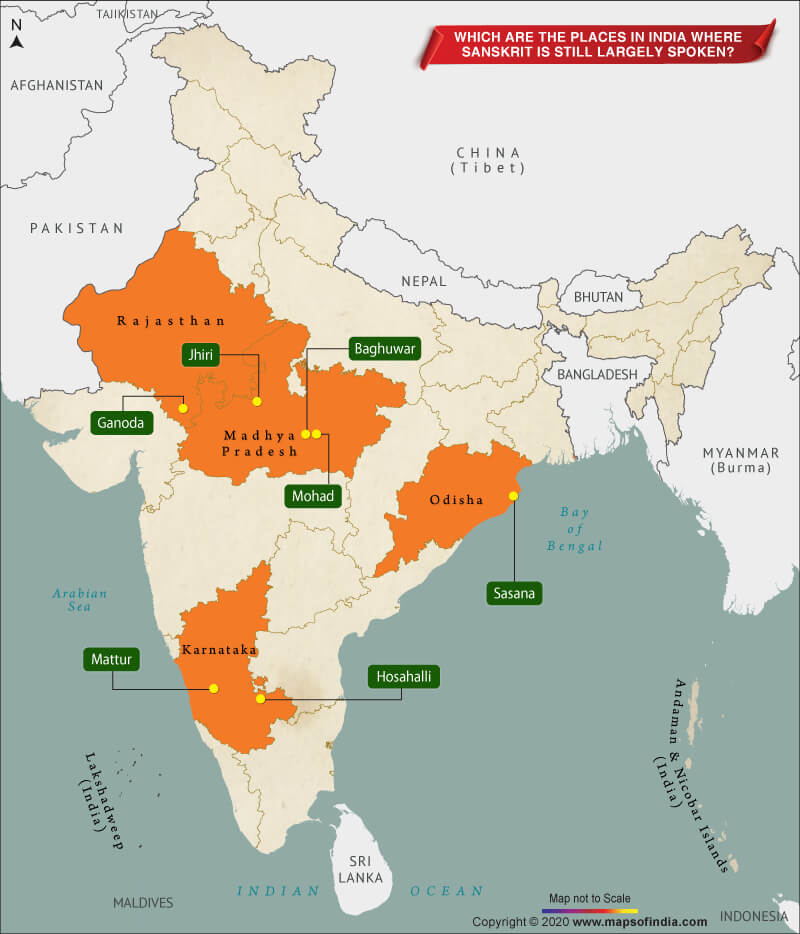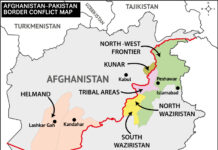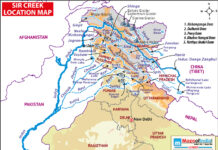

Sanskrit is considered as ‘Dev Bhasha’, the language of Gods. The classic liturgical language of Hinduism has a history of around 3500 years. Sanskrit, in its numerous variants and dialects, was the lingua franca of ancient and medieval India. It used to be a primary language and the script is called ‘Devnagari’, which means used in the city of gods. Its earliest form – Vedic Sanskrit, was prevalent from 1500 – 500 BCE, a period where knowledge was imparted orally through generations. The term ‘Sanskrit’ is derived from the conjoining of the prefix ‘Sam’ meaning ‘samyak’ which indicates ‘entirely’, and ‘krit’ that indicates ‘done’. Thus, the name indicates ‘perfectly, refined or entirely done’ in terms of communication, reading, hearing, and the use of vocabulary to transcend and express an emotion.
An extraordinarily complex language with a vast vocabulary, it is still widely used today in the reading of sacred texts and hymns. It belongs to the Indo-Aryan branch of the Indo-European languages by family. The classic dialect helps in learning new languages (such as German) and also developing aptitude for logic and maths, mainly Vedic maths. Sanskrit is traceable to the 2nd millennium BCE in a form known as Vedic Sanskrit, with the Rigveda as the earliest known composition.
However, it is fading from the scene and declining in popularity in India. Now, only a few villages in India speak Sanskrit.
Following are the Places that Still Largely Speak Sanskrit:
1. Mattur, Karnataka
Mattur is known as India’s ‘Sanskrit village’. It is a quaint, sleepy hamlet which lies along the bank of Tunga river in karnataka and lies 300 km’s from Bangalore. People can be found using Sanskrit in their day-to-day communication and are very fluent in it . The villagers, who lead Vedic lifestyle, chant the ancient texts and converse in the language. This practice has made sure to preserve Sanskrit and make it flourish. Even children speak the language fluently and are educated in it. Despite the fact that the official language of the state is Kannada, this village has been successful in preserving Sanskrit as a regional language. It is a unique accomplishment for the residents.
2. Jhiri, Madhya Pradesh
This village is a remote hamlet located in Madhya Pradesh’s Sarangpur Tehsil of Rajgarh district , situated 150 km north of Indore . With a population of less than 1000, this village is still keeping up with the ancient language. The local dialect is Malwi here, but hardly anyone speaks it. Men, women, children, literate & illiterate, all speak an Indo-Aryan language here, and Sanskrit has replaced it in the last 16 years. An organisation by the name of Samskrit Bharti started conducting ‘Samskrit Sambhashan camps’ in the village through an activist named Vimla Tewari. She came to lodge there for a year, but in the mean time she developed the interest of the villagers in the language, so much so that everyone turned up to learn Sanskrit.
3. Hosahalli
Karnataka Like Mattur, Hosahalli is another village in Karnataka that is known for its usage of Sanskrit as a primary language and for its efforts to support Gamaka art, which is a unique form of singing and storytelling in Karnataka along with Sangeetha (Carnatic music). It’s located on the banks of Tunga River in Karnataka. These two hamlets are almost always referred together by virtue of the villagers’ penchant for using Sanskrit in daily communication. It too lies on Tunga river’s bank and is situated about 5 km from Shivamogga village. Quarrelling or gossiping – all is done in Sanskrit.
4. Sasana, Odisha
This remote village is located in the coastal Gajapati district in Odisha and most of the dwellers here are Brahmins. Many people are working in the government-based educational institutions which are Sanskrit-medium. It boasts of having a pundit of the ancient language in every home. A Sanskrit pundit employed in government-run Sanskrit-medium educational institutions can be found in every household here. Most of the dwellers in this hamlet are Brahmins and the village has around 50 households with 300-odd members.
5. Baghuwar, Madhya Pradesh
It is located in Kareli Tehsil of Madhya Pradesh, 15 km from the district headquater Narsinghpur. Sanskrit is the prime language here and the majority of people are well-versed in it.
6. Ganoda, Rajasthan
This village is located in the Banswara district of Rajasthan state. If you visited here a few years ago, you would have found people talking in the local language Wagadi. But now, most of the people fluently speak Sanskrit. This change in language happened as a Sanskrit-based institute opened here, providing education up to the college level. Nearly all the children in the region joined it and the teacher encouraged all to speak in Sanskrit to gain fluency. Thus, everyone started speaking to the elders also in Sanskrit. This resulted in the elders also learning the language from their children, and thereby brought about a change of scenario in the local language of the region.
7. Mohad, Madhya Pradesh
This is a village panchayat located in Madhya Pradesh’s Burhanpur district. It is situated 25 km away from the sub district headquaters Maheshwar and 60 km away from the district headquarter of Khargone. It is not uncommon to find people here talking to one other in fluent Sanskrit.



